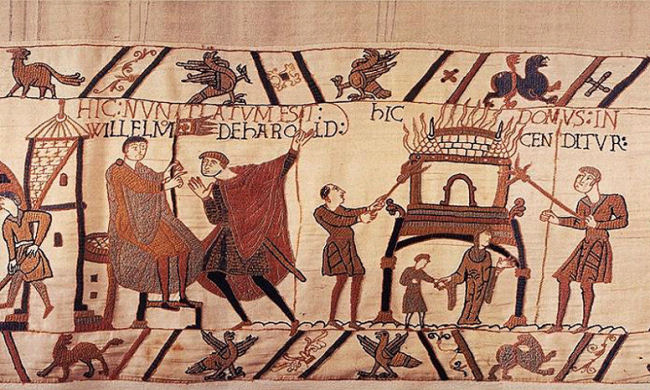The town of Bayeux, an absolutely delightful Norman French village, is home to the “Bayeux Tapestry,” a famous 11th-century piece of medieval artwork that portrays the Norman conquest of England. During our group’s visit to Bayeux, this tapestry was by far the highlight of the Bayeux portion of the program. It is frankly wonderful that the piece was able to survive for as long as it did. The tapestry’s origins and exact purpose are debated, leaving many interpretations of the artifact. One of these is that those who created the tapestry, the majority of whom were women, were hiding messages to show dissatisfaction with William the Conqueror, showing things like him burning the homes of innocent women and children and refusing to portray Harold II as a villain. These depictions seem out of place in a tapestry that supposedly glorifies William. If those who created this tapestry had used their needlework to subtly protest William’s actions, this would be a great example of resilience in the face of an overwhelming, controlling force.

This is the 47th scene of Tapestry where it shows William’s army burning the houses of the innocent
What stood out to me was how this parallels the bravery and resistance of certain French women in the French Resistance during WWII that we have been learning about throughout our group’s visit to France. Both would have been using forms of silent resistance against a force that likely would not have perceived women as capable of resisting. Women played crucial roles in the Resistance, undertaking dangerous missions to sabotage Nazi operations, gather intelligence, and aid Allied forces. They made use of their enforced role as homemakers to find opportunities to participate in resistance activities. Similarly, if the creators of the Bayeux Tapestry were indeed embedding subversive messages within their work, they too were participating in a form of resistance against a ruler using a tool almost exclusively unique to women to resist.

From the buildings around town to pieces like this, history feels like it comes life when you are in Bayeux
At first, it seemed like our group’s visit to the Bayeux Tapestry was somewhat out of place, as amazing as the visit was, as it is not directly connected to WW2. However, after reflection, I realize that the story of Tapestry reveals how, while aspects of war and conquests have changed over thousands of years, how people react in the face of war and conquest has often stayed the same across history. This is why I believe that it was important for our group to visit the tapestry. I, as a history major, believe it is important that history be studied so we can learn from our past. A town like Bayeux emphasizes this, even outside of just the Tapestry. The past felt alive here, especially for a person like me, someone who’s hometown is barely 200 years old!